Search results for 'de 1 2'
-

Cretacolour Wooden Lead Holder
£14.75Cretacolour Wooden Lead Holder. Supplied with 5mm 2B lead. Learn More -

Milliput
Starting at: £4.80
2 part, epoxy resin moulding material for prepairing surfaces and mouldings. Store in a cool, dry place. Shelf life is 2-3 years. Hardener may yellow if it dries out. This is due to the resin leeching out to the surface of the stick. If this happens, kneading with fingers will make it smooth and white again. Learn More -
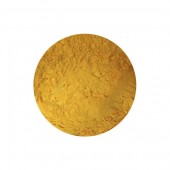
Lead Tin Yellow Dark Pigment
Starting at: £4.80
Lead Tin Yellow Dark Pigment. Larger sizes available. Please ask for quotation.Toxicity: D Lead is a highly poisonous metal which, if inhaled, ingested, or introduced to the blood through cuts in the skin, builds up in the body and can affect multiple parts of the body, including the digestive and nervous systems.
PERMITTED USES: Restoration of art works and protected buildings when there are no suitable alternatives.
IMPORTANT: Please refer to the MSDS (Material Safety Data Sheet) below.
SHIPPING: Please note, we are not able to send this product outside the UK.
Learn More -
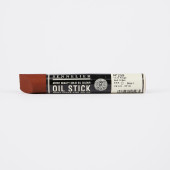
Sennelier Oil Sticks
Starting at: £7.65
Solid artists' quality oil paint sticks. (Ø = 3/4 ; length = 5" ) SENNELIER Extra-Fine Solid Oil Sticks can be used alone or in combination with oil colours in tubes. The oil stick colours can be used for an entire painting. They are applied directly to any traditional oil-painting support, such as canvas, wood panel or fine art paper. They need the same archival priming (acrylic gesso or oil ground) that oil paint requires. Surfaces: Before use, the surface film of the oil stick must be peeled off. It will form again after a few days of non-use, protecting and conserving the colour. The oil sticks must be applied in a thin film application of no more than 1mm thick. Once applied they can be painted over with oil stick or oil paint and if desired be diluted with turpentine. Oil stick Medium, a colourless oil stick, may be used to produce transparent effects and glazes. Once applied, the oil stick surface will dry in 2 to 5 days, depending on the atmospheric conditions Varnishing: If varnishing is desired, you must wait 6 months (as in traditional oil paint) until the colour is completely dry, before giving the painting a final coat of picture varnish. Use a soft brush to varnish so that the oil stick marks are not disturbed. SENNELIER Extra-Fine Solid Oil Stick colours are either opaque (O) or transparent (T) depending on the nature of the pigment in each colour. Oil Sticks do not change during storage and require no special precautions except to be kept away from any source of heat, which could adversely affect the stick. Application Techniques After applying the colour with the point or the edge of the oil stick, colours can be mixed directly on the support using the following methods: • Blending, with brush, finger, or drawing stump. With or without turpentine • Wash-drawing, dilute colours with turpentine or mineral spirit • Retouching, with oil stick, palette knife or brush • Textures, thick application oil stick colour. Retouch with a brush or palette knife •Sgraffito, scratching a layer of fresh paint with a point (brush handle, palette knife, etc.) to reveal the layer below. Sgraffito is related to engraving, and is used not only for revealing the under-layers of paint but also to scratch and clean unsatisfactory parts of the painting •Interior Decoration, on glass, ceramics etc. Use for decorative purposes only Learn More -
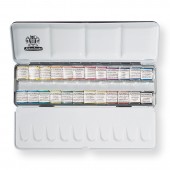
-
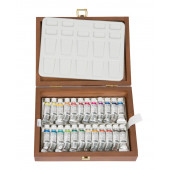
Schmincke Horadam Box 24 x 5ml Tubes
Starting at: £209.60
Schmincke Horadam Box 24 x 5ml Tubes. Learn More -
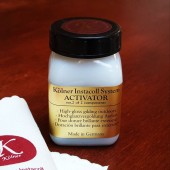
Instacoll Gilding System
Starting at: £6.85
Kölner Instacoll is a two-part system, consisting of a base coat and activator, that can be used on nearly all suitably prepared substrates to create weather-resistant, high gloss interior and exterior gilded surfaces. The Instacoll Tool is a double-ended tool with shaped tips made of elastic rubber, designed for pressing gold and silver transfer leaf into indentations when gilding uneven surfaces. The Instacoll Chiffonnette is an extra soft, lint-free cloth, used for polishing and burnishing surfaces gilded with Instacoll. *PLEASE NOTE - COLOURS OF THESE PRODUCTS MAY VARY SLIGHTLY FROM PRODUCTS PICTURED* Learn More -
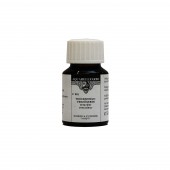
Rohrer & Klingner Drying Retarder 50ml
£8.90Rohrer & Klingner Liquid Watercolour Drying Retarder 50ml Learn More -

Orpiment Pigment
Starting at: £12.75
PY39
Orpiment, also called King's Yellow, is a mineral pigment containing naturally occurring sulphide of arsenic. Its high toxicity, and the prevalence of cadmium pigments, means that it is largely obsolete outside the field of restoration. It works best bound in oil or egg tempera, but it is not reliably permanent. Larger quantities are available by request.
Toxicity D.PERMITTED USES: Restoration of art works and protected buildings when there are no suitable alternatives.
IMPORTANT: Please refer to the MSDS (Material Safety Data Sheet) below.
SHIPPING: Please note, we are not able to send this product outside the UK.
Learn More -
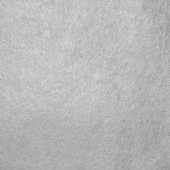
Cornelissen Silver Leaf Thin
Starting at: £11.00
Cornelissen Silver Leaf Thin, 95 x 95 mm (20g/1000 lvs). Book of 25 leaves Learn More -

Vermilion Genuine Pigment
Starting at: £17.00
PR106 Vermilion is an artificial pigment based on mercuric sulphide, which occurs naturally as Cinnabar. The synthetic form contains fewer impurities than Cinnabar, and was in use in China as early as the fourth century. It was present in Europe from the ninth century, and was the most widely used red pigment until the introduction of Cadmium Red in the early twentieth century. It has good tinting strength and opacity but, like many red pigments, it dries very slowly in oil media. Toxicity D. Larger sizes available on request. Domestic shipping only Learn More -

Burnt Green Earth Pigment
Starting at: £8.00
PG23 Burnt Green Earth is a semi-transparent pigment that is stable in all media, although it may be difficult to incorporate into an acrylic binder. A calcined form of Green Earth, it has a low tinting strength, long drying time, and is very lightfast. Toxicity: B Limeproof Learn More -

Cornelissen 80 Victorian Gold Leaf 23 ct
Starting at: £63.80
Victorian Gold Leaf 23 ct, 80 x 80 mm. Book of 25 leaves. Coverage per book is 0.16 m2 (1.69 sq. feet) Learn More -

HMG B72 Restoration Adhesive
£7.70B72 Acrylic Adhesive is touch dry in 3-5 minutes, surface dry in 1 hour and hard dry in around 6 hours. Not having instant grab, fragments can be easily re-adjusted and surplus adhesive removed with acetone, making any joint virtually invisible. It’s ideal for repairs to pottery, wood, metal, glass, ivory and many porous substances. 14ml. Learn More -

Orange Shellac
Starting at: £8.00
Shellac is a natural resin that is deposited by the female lac insect on the branches of trees in India and Thailand. It is soluble with alcohol, but not with mineral spirits or turpentine. It forms a tough yet flexible film, with many applications. It is suitable as a top coat for gilding when applied thinly, a sealant for porous surfaces, an isolating layer for tempera paintings, a base for pigmented inks, a protective layer for collograph plates, and a warm varnish for wooden floors and furniture. As it is prone to darkening with age, it is not recommended as a varnish for oils, and its solubility can reduce over time. There are various grades of shellac. When mixed with alcohol, it may initially form a cloudy mixture, due to traces of wax in the shellac, but this should become clear once it has dried. The highest grades of shellac are Clear Dewaxed Shellac, which has been de-coloured using the carbon filtering method, Lemon Shellac, and Orange Shellac, which are pale in colour. Button Shellac is less refined and therefore produces a reddish varnish. It was, in fact, widely used as a red dye before synthetic dyes became available. Learn More -

Ivory Black Genuine Pigment
Starting at: £38.00
PBk9
Genuine Ivory Black is produced by burning reclaimed ivory, such as piano keys. These are antique, mainly Victorian pieces, using ivory with started out as hippo or walrus teeth, and offers a higher carbon content and greater tinting strength than modern-day equivalents, which are usually derived from animal bones. It is a particularly slow-drying pigment.
Larger quantities are available by request. While stocks last.
Learn More -

-

Daler-Rowney Cryla 250ml
Starting at: £8.90
Cryla Artists' Heavy Body colours are designed to retain the intended stroke when applied with a knife or brush, so they are ideal for highly textured impasto painting techniques. Learn More -

Cornelissen 80 Palladium Leaf
Starting at: £75.40
Palladium Leaf, 80 x 80 mm. Book of 25 leaves. Coverage per book is 0.16 m2 (1.69 sq. feet) Learn More -

Rohrer & Klingner Autographic Ink
Starting at: £24.60
Autographic ink is a particularly greasy ink used for drawing in silkscreen or lithography, or as a transfer ink. It can be applied to transference paper, ideally one that is strongly sized with a fine grain, or it can be directly applied to the stone. Learn More -

Roberson Prouts Brown Ink
Starting at: £6.40
Non waterproof, The ink can be used in all types of pens. Learn More -

Cinnabar Pigment
Starting at: £16.00
PR106
Cinnabar, composed of mercuric sulphide, is a mineral pigment found in crusts or veins in sites of volcanic activity. It has good tinting strength and opacity but, like many red pigments, it dries very slowly in oil media. Due to its high toxicity, it is no longer an ingredient in commercial paints, but is a prominent colour in historical palettes.
Generally, Cinnabar refers to the natural mineral, while Vermilion refers to the synthetic pigment. Cinnabar has been mined since at least the tenth millennium BC, and used as a painting material, gemstone, and ritual object by many cultures around the globe. Toxicity D.
Larger sizes available on request.
Learn More -

Cornelissen 85 Pure Gold Leaf Extra Thick 24 ct
Starting at: £79.80
Pure Gold Leaf 24 ct, Extra Thick. 85 x 85 mm. Book of 25 leaves. Coverage per book is 0.18 m2 (1.97 sq. feet) Learn More -

-

Egyptian Blue Pigment
Starting at: £5.90
Egyptian Blue is stable in all media, highly transparent, with a weak tinting strength. A synthetically produced calcium copper silicate, it is considered to be the earliest artificial pigment, dating from antiquity and widely used in ancient Egypt. Larger sizes available on request Learn More -

da Vinci Series 428 Red Sable Watercolour brush, round
Starting at: £21.00
ARTISSIMO -Made from pure Kolinsky red sable hair - Embedded in transparent plastic quills - Wire-bound with care on naturally lacquered handles - For wash and watercolour painting on large areas - Pure Kolinsky Red Sable hair - French style Learn More -

Cobalt Violet Dark Pigment
Starting at: £14.00
Cobalt Violet Dark Pigment (PV14). Synthetic inorganic pigment. Semi-transparent. High tinting strength. Excellent Lightfastness. Low oil absorption with fast drying rate. All media including ceramics. Used since late 19th Century.
Limeproof
Toxicity: C
Please note, unfortunately we are not able to send this product outside the UK.
Learn More -

Chrome Yellow Orange Pigment
Starting at: £14.00
Chrome Yellow Orange Pigment (PY34). Synthetic Inorganic pigment (Lead Chromate). Opaque. Good tinting strength. Lightfastness is good, but in some cases unstable as it can darken and turn greenish. Low oil absorption with fast drying rate. Recommended for oils not suitable for water-based mediums. Used since late 18th Century.
Toxicity: D Lead is a highly poisonous metal which, if inhaled, ingested, or introduced to the blood through cuts in the skin, builds up in the body and can affect multiple parts of the body, including the digestive and nervous systems.
PERMITTED USES: Restoration of art works and protected buildings when there are no suitable alternatives.
IMPORTANT: Please refer to the MSDS (Material Safety Data Sheet) below.
SHIPPING: Please note, we are not able to send this product outside the UK.
Learn More -

Cerulean Blue Pigment
Starting at: £14.50
PB35
Cerulean Blue is an artificial mineral pigment that is prepared by heating a mixture of Cobalt Chloride and Potassium Stannate. It was first synthesised in the early nineteenth century, becoming more widely used from 1870, when Rowney introduced Coeruleum Blue into their range. It produces a very bright, clear, and unusually opaque blue, hence its name, which is derived from the Latin for "sky-blue", or perhaps "heaven-blue". It has a very low tinting strength meaning that, although it is stable in all media, some artists may choose to bind it in poppy rather than linseed oil, so that the colour isn't affected by the colour of the binder. It creates a fairly flexible paint film, and is a fast-to-medium drying pigment.
Limeproof
Toxicity: B
Learn More -

Cornelissen 85 Standard Gold Leaf 22 ct
Starting at: £68.40
Standard Gold Leaf 22 ct, 85 x 85 mm. Book of 25 leaves. Coverage per book is 0.18 m2 (1.97 sq. feet) Learn More





